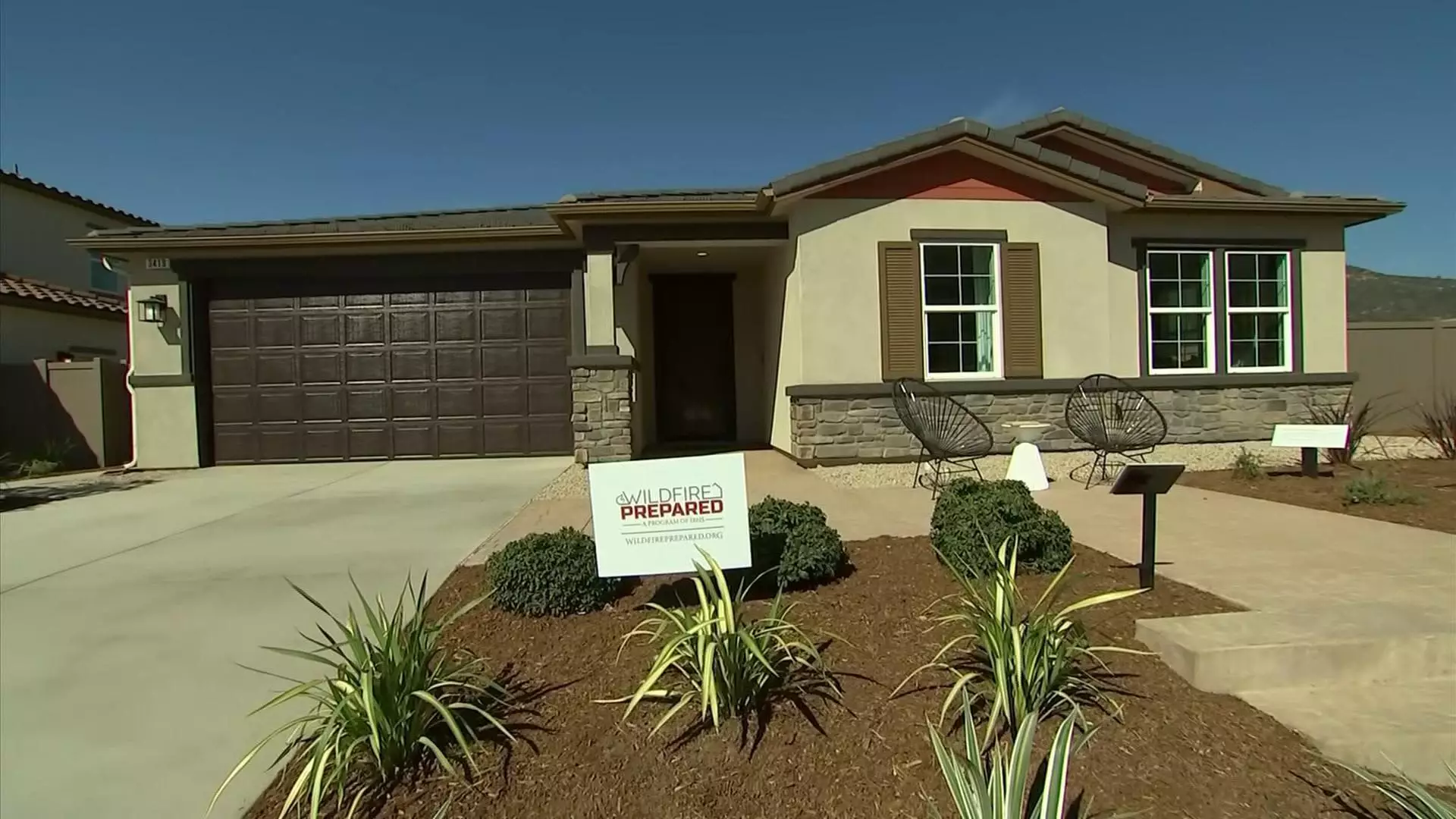In the aftermath of devastating wildfires that ravaged homes and lives in Los Angeles, the emergence of KB Home’s new wildfire-resilient community in Escondido feels like a breath of fresh air. However, this development isn’t just a response to nature’s fury; it’s a vital shift in how we think about housing safety amid the escalating climate crisis. With California grappling with severe droughts and unpredictable fire seasons, the necessity for innovation in home construction has never been more critical. This venture, involving 64 single-family homes imbued with protective measures, raises questions about our preparedness for impending environmental dangers.
When KB Home claims to offer its first “wildfire-resilient” community, they are not merely introducing a good marketing ploy. They are making a statement that transcends traditional housing norms. The statistical reality is that widespread devastation caused by wildfires is becoming commonplace. Homebuilders must learn how to construct residences that can withstand the unrelenting forces of nature, or face the grim alternative—a future where homeowners are continually left vulnerable and unprotected.
Innovation Over Comfort: An Architectural Challenge
KB Home’s commitment to resilience is commendable but comes at a cost, both financially and architecturally. The need to retrofit designs quickly to meet fire-resilient standards presents a unique challenge that highlights the conflict builders face between client expectations and innovative safety solutions. The modification of architectural designs to include elements like stucco exteriors, non-combustible materials, and tempered-glass windows underscores a pivotal transformation in the industry. While aesthetically pleasing designs may fall by the wayside, the importance of safety must take precedence.
Yet, one can’t help but wonder—will this change lead to a one-size-fits-all mentality? The growing reliance on standardized, fire-resilient materials poses a risk of homogenizing communities at the expense of character and individuality. If the solution is merely to construct standard homes with fire-resistant materials, will we truly have addressed the deeper issues at play in our increasingly volatile climate? Or have we just put a band-aid over a festering wound, rather than devising robust preventative measures?
Cost vs. Safety: The Balancing Act
With home prices in the low millions, affordability remains a thorny issue that underscores an unfortunate truth about our society: safety is commodified. In an era where insurance companies are pulling back from high-risk areas, these homes signify security for some and an unattainable luxury for others. It’s troubling that the very notion of safety has become a privilege rather than a right in California. KB Home’s ambitions to serve first-time buyers and move-up buyers will be scrutinized, as many in that demographic find financial strain a major barrier to homeownership.
Regional General Manager Steve Ruffner has alluded to efforts to make these homes affordable, highlighting the dual challenge of keeping prices down while ensuring safety. But at what cost? Increased construction costs may be justifiable in the name of survival, yet if these expenses are passed down to buyers, we risk excluding vital segments of the population from participation in resilient housing solutions altogether. When security comes at such a staggering price, we must question who really gets to participate in this “test bed” for fire-resistant communities.
The Community Impact: Looking Ahead
As Roy Wright, CEO of the Insurance Institute for Business & Home Safety (IBHS) pointed out, the significance of KB Home’s latest venture extends far beyond the immediate block of homes it creates. It exemplifies a shift in resilience practices, potentially setting a benchmark for future developments. However, the reality remains that we are still in the early stages of learning to coexist with our ever-changing environment. Spaces that survive flames today may still be at risk tomorrow if urban planners and communities don’t adopt proactive standards that extend beyond mere construction.
Still, the notion that nothing is ever entirely fireproof is a sobering reminder of our limitations. While these innovations provide hope, they do not eliminate risk—the real test lies in their performance during an actual wildfire. As communities rally to embrace these new standards, we must ensure that they are accompanied by comprehensive education on landscaping choices and fire safety measures. Without a more collective, societal approach, the efficacy of these homes as a firewall against disaster may remain largely theoretical.
In exploring these aspects, it becomes clear: resilience isn’t merely about building fire-resistant homes; it’s about reshaping our approach to community planning, one that prioritizes safety for all and not just the fortunate few.

